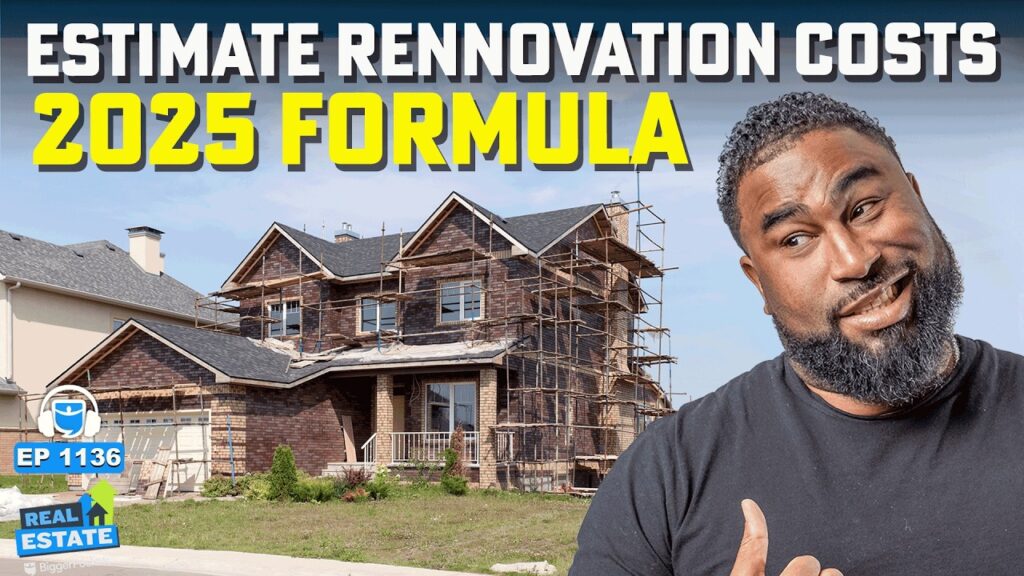Understanding the Current Real Estate Market in Mexico City in 2025
As the real estate landscape in Mexico City continues to evolve rapidly, investors frequently ask themselves: Are renovation properties still worth the investment in 2025? With the continuous urban expansion, changing demographics, and evolving economic conditions, it is crucial to thoroughly examine whether investing in renovation properties remains profitable and relevant in today’s market.
Analyzing the Appeal of Renovation Properties in Mexico City
To understand whether renovation properties still hold investment value in 2025, investors must first consider the fundamental appeal of such properties. Renovation properties, often referred to as “fixer-uppers,” typically offer significant potential to increase property value through strategic improvements. These properties usually come at a lower purchase price, making them particularly attractive for investors aiming to achieve significant returns through renovations and upgrades.
Historical Performance of Renovation Properties
Historically, renovation properties have been popular among investors in Mexico City due to their strong potential for appreciation. The city’s older neighborhoods, such as Roma, Condesa, Juárez, and San Rafael, have experienced substantial growth and revitalization through strategic renovation projects. These areas, once overlooked, are now thriving communities characterized by vibrant lifestyles, cultural attractions, and rising property values. This historical context is essential to understanding whether renovation properties remain a viable investment strategy in 2025.
Current Market Conditions in 2025
As we evaluate the worthiness of investing in renovation properties in 2025, it’s important to consider current market conditions. Several key factors are influencing the real estate market in Mexico City today:
- Increased Urbanization: Mexico City continues to attract residents from surrounding areas and international communities, driving demand for centrally located housing. Renovation properties situated in convenient, central locations remain particularly attractive for investors and homebuyers alike.
- Rising Housing Costs: Property prices in Mexico City have steadily increased, making new builds increasingly unaffordable for many buyers. Consequently, renovation properties represent a more accessible entry point into desirable neighborhoods.
- Limited Availability of New Developments: Due to zoning restrictions and limited land availability in central areas, renovation properties provide investors with opportunities to capitalize on limited housing stock.
Pros and Cons of Investing in Renovation Properties in 2025
To effectively answer the question, Are renovation properties still a good investment in 2025?, we must carefully weigh the advantages and disadvantages of this investment strategy.
Advantages of Renovation Property Investments
- Potential for High Returns: Strategic renovations can significantly boost the value of a property, allowing investors to realize substantial profits upon resale or through rental income.
- Lower Entry Cost: Renovation properties often sell below market value, making them accessible investments for those with limited capital.
- Customization Opportunities: Investors have the flexibility to tailor properties to meet current market demands, increasing their appeal and value.
- Tax Incentives and Government Support: In some cases, local governments offer incentives or financial assistance for renovations aimed at improving community conditions, historical preservation, or sustainability.
Challenges and Risks Associated with Renovation Properties
- Unexpected Costs: Renovation projects can incur unforeseen expenses, significantly impacting profit margins.
- Project Delays: Permitting, supply chain issues, and contractor availability can lead to delays, prolonging the investment timeline and increasing holding costs.
- Market Fluctuations: Changes in economic conditions or real estate market trends may reduce the anticipated return on investment.
- Regulatory Hurdles: Mexico City’s building codes and regulations can sometimes complicate or slow down renovation projects, especially in historical or protected areas.
Trends Shaping Renovation Property Investments in Mexico City in 2025
To further understand whether renovation properties remain valuable investments in 2025, investors must consider current trends shaping the market:
Increased Demand for Sustainable and Energy-Efficient Housing
Today, buyers and tenants prioritize environmentally sustainable homes. Renovation projects that integrate eco-friendly materials, energy-efficient appliances, and sustainable design principles are likely to attract greater interest and command higher market values. Investors who recognize and capitalize on this trend stand to benefit significantly.
The Rise of Remote Work and Home Offices
With remote work becoming the norm for many professionals, properties that incorporate dedicated office spaces and flexible layouts are increasingly desirable. Renovation projects that address this trend can significantly increase property appeal and value.
Preference for Walkable, Amenity-Rich Neighborhoods
Mexico City residents increasingly favor neighborhoods with convenient access to amenities such as public transportation, parks, restaurants, and cultural attractions. Renovation properties in such neighborhoods, or areas undergoing revitalization, present lucrative opportunities for investors.
Strategies for Successful Renovation Investments in Mexico City in 2025
To effectively answer the question, Is investing in renovation properties still profitable in 2025?, investors must adopt strategic approaches that maximize returns and minimize risks:
- Careful Property Selection: Choose properties in neighborhoods with strong potential for appreciation, considering factors like accessibility, safety, community growth, and future development plans.
- Thorough Cost Analysis: Conduct detailed financial analyses, including renovation costs, holding costs, and expected resale or rental income, to ensure projects remain profitable.
- Hiring Experienced Professionals: Work with reputable contractors, architects, and real estate agents familiar with local regulations, market trends, and renovation strategies.
- Keeping Up with Market Trends: Stay informed about current market preferences, including sustainability, technology integration, and remote-work-friendly layouts, to ensure renovations meet buyer demands.
Neighborhoods in Mexico City Ideal for Renovation Investments in 2025
To identify whether renovation properties are still worthwhile investments, investors should focus on neighborhoods with high growth potential and increasing popularity:
- Santa María la Ribera: Known for its historic architecture and vibrant cultural scene, this neighborhood continues to attract young professionals and families.
- Escandón: Conveniently located near Condesa and Roma, Escandón offers lower property prices and strong potential for appreciation through renovation projects.
- San Rafael: Rapidly becoming popular among artists and entrepreneurs, San Rafael presents excellent opportunities for profitable renovation investments.
- Portales and Narvarte: These centrally located neighborhoods provide affordable renovation opportunities, appealing to first-time buyers and young families.
Conclusion: Are Renovation Properties Still Worth the Investment in 2025?
After careful analysis, it is clear that renovation properties remain highly worthwhile investments in Mexico City in 2025. Despite potential challenges, strategic investments in renovation projects continue to offer significant profit opportunities, particularly when investors carefully select properties, understand market trends, and manage renovation processes efficiently.
Ultimately, renovation properties in Mexico City represent a solid investment opportunity for those willing to navigate the associated risks and challenges. By embracing emerging trends, leveraging local market insights, and carefully executing renovation strategies, investors can continue to achieve substantial returns on investment well beyond 2025.



